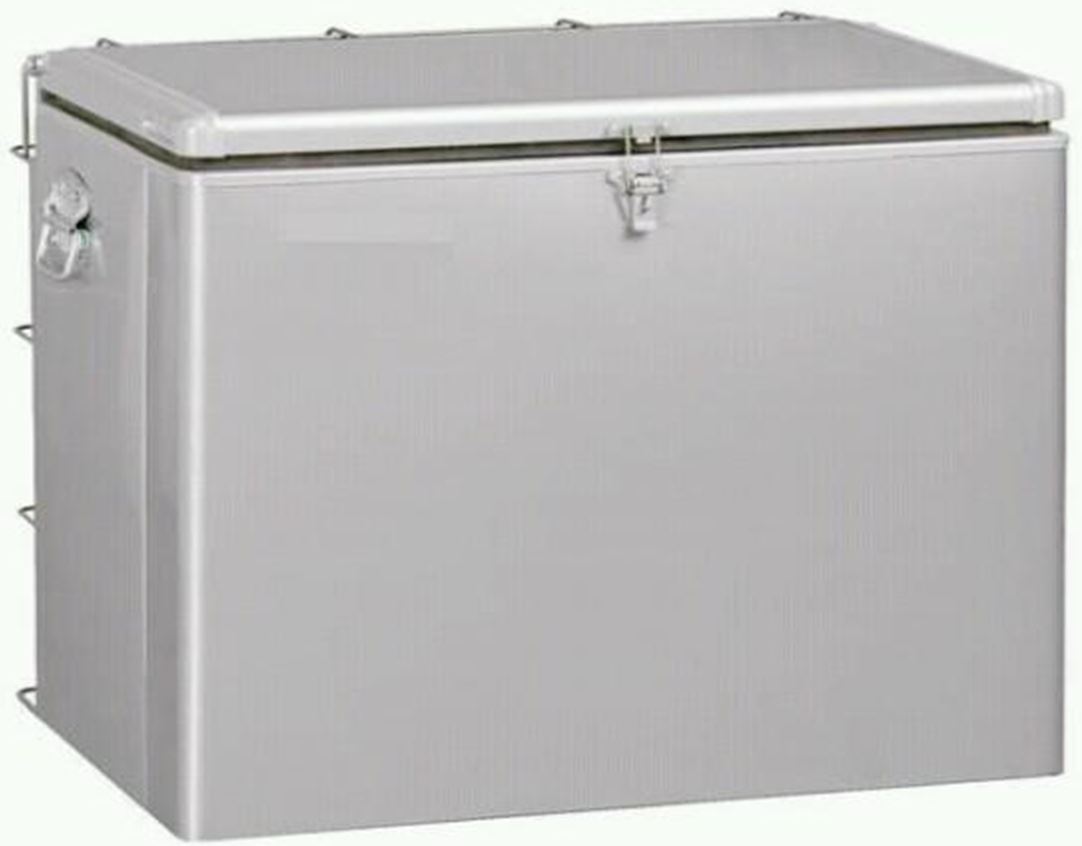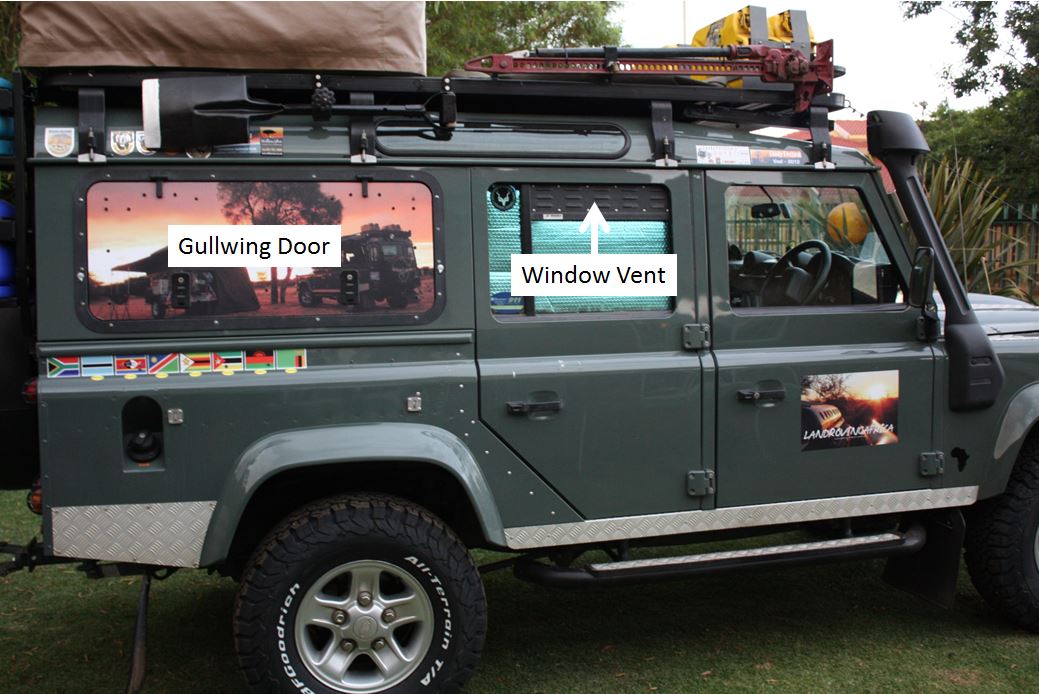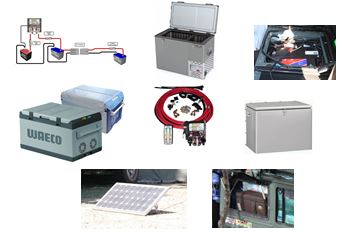Our fridges and dual battery system
When we started with our trips, to neighbouring countries, many years ago, we made use of a 70L 3-way absorption Zero Fridge, which at the time served our needs. The fridge could operate from one of three power sources: gas, 12volt battery power or 220 volt mains.

Zero 70L 3-way absorption Fridge
- It worked best connected to gas on a level surface.
- It was not very efficient connected to battery power while traveling, especially in hot temperatures.
- It performed reasonably well connected to 220 volt mains power while at home or at campsites where power was available.
- Being an absorption type of fridge the construction was bulky and it took up a lot of space.
- During high ambient temperatures it really suffered to cool down sufficiently and we would often end up with the top part defrosting.
Hence the decision was made to change to a battery/mains powered compressor type fridge.
After careful consideration and research about the different makes available, we decided on an 80L Weaco.
The Waeco served us very well over a number of trips and the only negative was that it consumed a large amount of available battery power. It would run non-stop during hot summer days.

Waeco 80L Fridge
On one of our trips through Botswana a friend’s Waeco packed up resulting in him having to cook most of the perishable foods. Other items we could save and store in our fridge.
When this happened, we realised that having only one fridge available when touring might not be such a good idea, and we started looking for alternative solutions.
We finally decided to sell the Waeco and buy two National Luna 52L week-ender fridges.

National Luna 52L Week-ender Fridge
This would give us 104L of space and should one fail during a trip, we would at least still have one available for the perishables. Surprisingly we found that the two National Luna’s consumed less power than the 80L Waeco did, even at high ambient temperatures.
One Luna is set for freezing and the other at minus 1 or 2 degrees to work as a fridge. Having them in the Land Rover turns out very convenient as we always have food and cold drinks available with us when we leave the campsite to explore.
Another improvement that we made was to take out the rear side windows of the Defender and install Frontrunner’s gullwing doors.
The two fridges are mounted at the back of the Defender right where the gullwing doors are. From here we found it very easy accessible.
We also fitted window vents in the two rears door windows to ensure that there will always be circulation of air in the vehicle even with all windows and doors closed.

Showing the Gullwing Doors and Window Vents
The Land Rover is equipped with a National Luna Dual Battery system and an 80W solar panel. The panel charges a 105amp hour’s deep cycle battery which streams power to the two fridges.
The system also connects to our off-road trailer (Donkey) ensuring that the battery in the trailer also remains charged at all times.




I will acknowledge that there might be more sophisticated and improved systems available in the market these days, but this setup works for me.
I can honestly say that we have been using this system for a number of years now without encountering any problems. If it ain’t broken, why fix or replace it?
Pieter.


Hi,
I’m currently planning a dual battery system for our Defender and wonder how exactly did you manage to fit in those two batteries? 8-} It seems your second battery is a BD 1250 with dimensions 330 x 172 x 240 mm?
cheers
Frank
Hi Frank, it is a very tight fitment and was done by Frontrunner, a company specializing in the equipment of vehicles for overland purposes. They are in Kayalami, Midrand, South Africa. They moved the original battery closer the sidewall on the middle of the box and also a little bit backwards to create space for the second battery. To get the second (deep cycle) battery out you has to remove the start battery first. They have a plate made for the purpose of fitting the two batteries that is fitted at the bottom of the battery box. I am sorry that I can’t help with more details on this fitment as I have not done it myself.
Thanks Pieter, frontrunner doesn’t seem to sell that plate online, unfortunately. I’ve now ordered a battery the same size as the original and will try to make a plate myself. Hope I wont get stuck with my fingers trying to squeeze everything in 😉
Frank
Hi Frank, I need to replace my deep cycle battery so will take both batteries out next week some time. I will then take pictures of the plate and how it was fitted and upload it for you.
Hi Pieter,
great Website you have here. Living in Kenya, married to a south african and just coming back from a roundtrip Nairobi-JHB_Nairobi, I can relate to a lot of things you encountered.
In my Defender I also run a dual battery system from Naitional Luna under the seat. After a while, I added a Solarpanel and Regulator to the System. Although national Luna advertises, that it is no Problem to hook up a solarpanel with Regulator to their System, I found that the electronics of the dual battery System somehow hang up/freeze with this constallation. Now I only Charge the second battery via solar and have the national Luna System as a backup. Works like a treat. Did you also encounter this Little Problem?
Regards, Uwe
Hi Uwe,
I never had that problem with my dual battery system. It might be that the solar panel regulator is getting to hot under the seat. My solar regular is inside the vehicle on the rear door pilar just above the mounting for the seatbelt. The only reason that I placed it there it that my connection to the solar panel is on the roof. So I guess there is more ventilation keeping it cooler. That is all that I can think about. As I said, never experienced the same problem.
We are planning a long trip for next year which will include Kenya. I will let you know closer to the time and maybe if I am close to where you stay we can meet for a chat.
Regards
Pieter
you are more than welcome to contact me. I am happy to share some nice campspots. Do you have my email address via the comment page?
Cheers, Uwe
Yes, I got your e-mail address and will be in touch when we start planning next year.